Add Yoga to your swim workout!
It is becoming common, even among high-level athletes, to incorporate extra-pool workouts into the routine water training, the so-called “dryland training”.
This includes training for all the aspects for which the discipline is unable to train for certain specific reasons.
As swimming is practiced in the water, it should be remembered that the body is trained in conditions in which gravity is (almost) absent. Without gravity, you cannot actually strengthen your body, especially the bones and joints. For example, it is not uncommon to have swimmers (mainly athletes, or those swimming since a young age) complaining about pain in the lower back, knee or ankle the day after playing futsal, or running.
YOGA may be used for such a purpose.
Having its origins in the Indian culture, the term yoga includes today a series of body and mind exercises.
Hata Yoga is the most common practice. A session consists in assuming static positions (asanas), which, depending on the level of experience, are maintained for several seconds or minutes while controlling the breath.
Regular practice of 1 or 2 hours a week ensures 6 major benefits for your body:
1. FLEXIBILITY
This is probably the biggest benefit yoga brings to your body. Increasing flexibility will give you a wider range of motion and help you be more “economical” in your movements.
2. RECOVERY
Restorative yoga practice, also through the use of props, favors the recovery of physical condition between training sessions.
3. INJURY PREVENTION
For the reasons given above, the swimmer is prone to shoulders, ankles or back injuries. Poses such as “Downward Facing Dog” or “Upward Facing Dog” help prevent accidents in these areas.
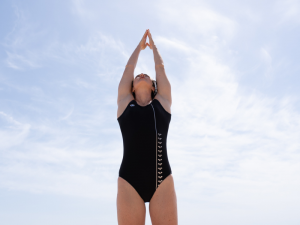
4. STRENGTH
The asanas use body weight to develop the physical force in both upper and lower part of the body. These poses are also greatly beneficial for the core, which is fundamental for buoyancy.
5. MENTAL STRENGTH
In addition to physical relaxation, mental relaxation is an integral part of yoga. This leads to better body awareness, which can help double (if not more!) the workout or race results.
6. LUNG CAPACITY
Breath control (Pranayama) is always involved in any posture, thus strengthening the lungs. Knowing how to make a better use of each breath of air can make the workout or race less tiring.
If you can find a few minutes to practice at home, here are 4 asanas that cannot be omitted from your yoga routine.
Adho Mukha Svanasana (Downward Facing Dog) — Maintaining balance on hands and feet, your posture will greatly benefit your body. Also, you will strengthen and stretch your arms, shoulders, knees and calves.
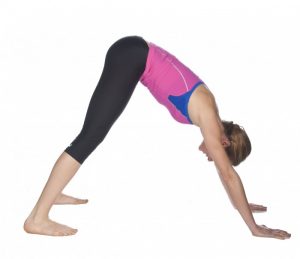
Urdhva Mukha Svanasana (Upward Facing Dog) — Also maintaining balance on hands and feet, but assuming opposite position. This will benefit mainly the back, chest, shoulders and hips.
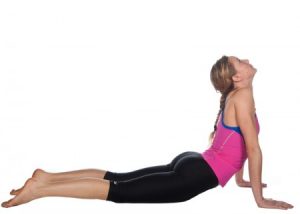
Gomukhasana (Cow Face Pose) — Assuming this position involves the upper part of your body. It will help tone up and stretch your biceps and triceps, pectorals, dorsal and shoulders.
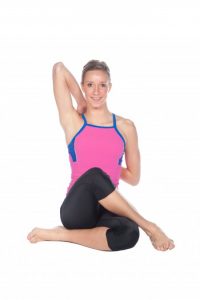
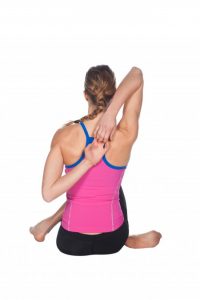
Baddhakonasana (Butterfly Pose) — This pose will help improve your pelvic area, which in swimmers is commonly rigid. They often have rigid hips and backache.
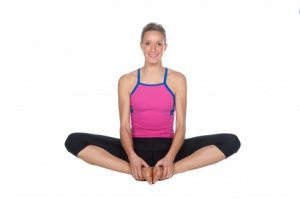
Now that you’ve read all this, you’ve just discovered a “new friend” that can help improve your overall condition!
—————
Are you looking for perfect clothing for your training? Be inspired by our collection!
Written by:
arena coaches
Swim coaches, trainers and experts will give you all kinds of tips for performing at your best in both training and races.







